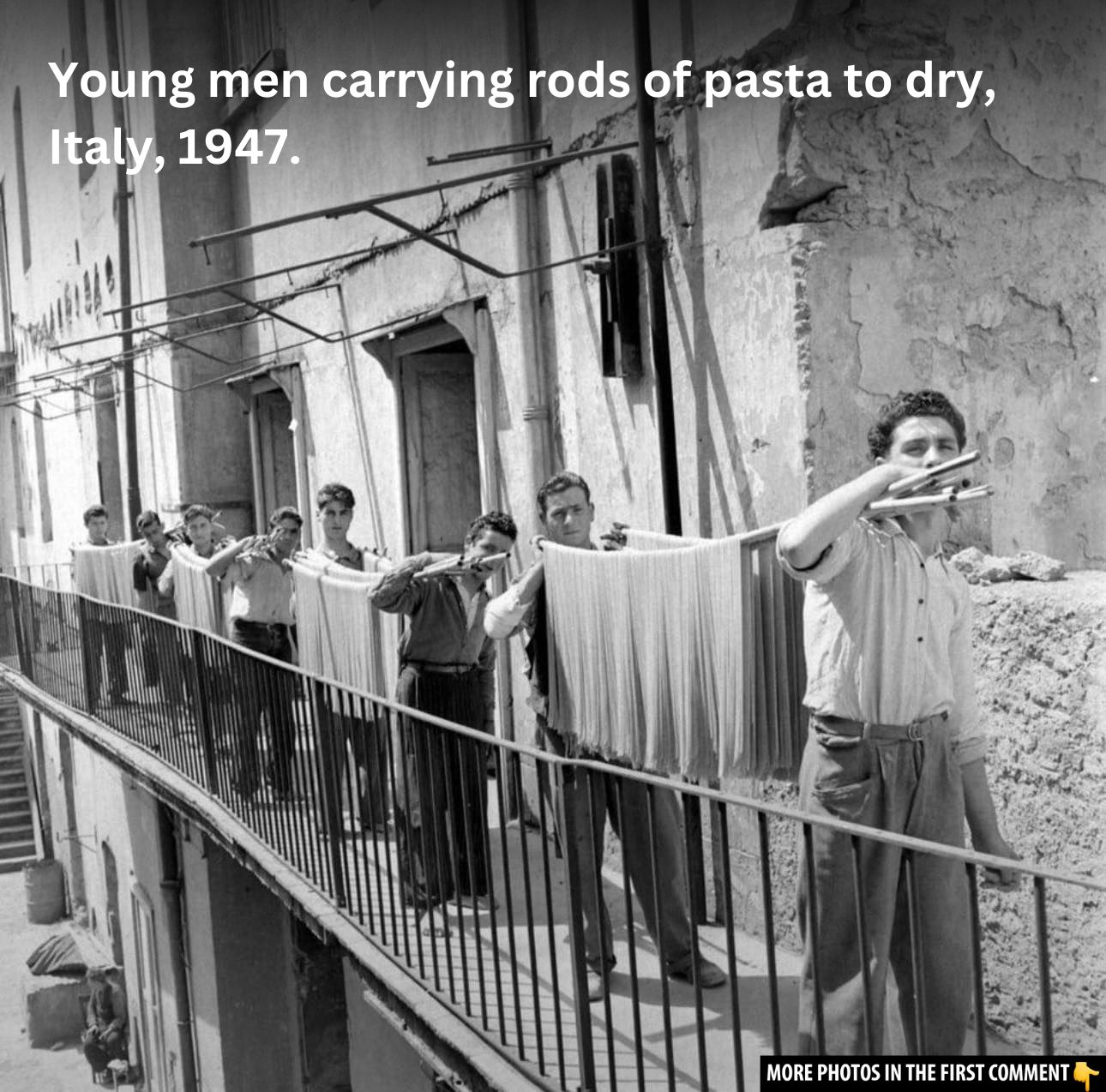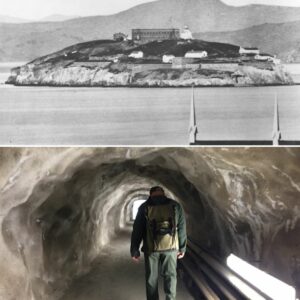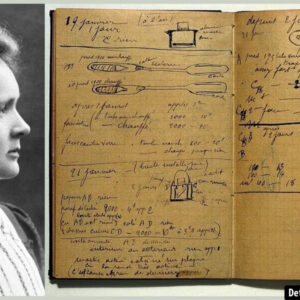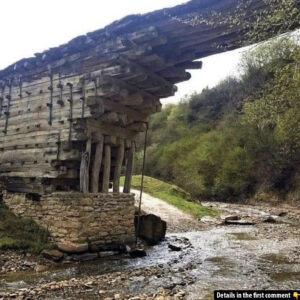There is little in the world of food that embodies the essence of a culture as strongly as Italian pasta. Whether in the bustling streets of Rome, the hills of Tuscany, or on tables around the world, pasta has become a universal symbol of Italian cuisine. Its journey from the ancient world to the industrial revolution of the 20th century is nothing short of fascinating. Italian pasta, deeply rooted in the country’s history, continues to be a staple in kitchens across the globe. But how did this simple dish evolve into the culinary icon it is today? To explore this, we must look at the centuries of innovation, labor, and tradition that led to the pasta we know and love today.
Ancient Roots to Modern Day: The Evolution of Pasta
The story of pasta begins far earlier than many people realize, and surprisingly, it has nothing to do with Marco Polo, as commonly believed. While the Venetian merchant’s travels to China were pivotal in the exchange of goods, pasta was already well-known in Italy long before Polo’s time. Evidence from the Etruscan and Roman eras shows that a precursor to modern pasta, called “lagane,” was made from durum wheat—much like today’s pasta. These early forms were not boiled, however, but rather oven-baked. By the 1st century AD, this food had begun to resemble what we now recognize as pasta, paving the way for the later development of various shapes and forms.
As trade routes expanded and innovations occurred, pasta began spreading from Sicily to the mainland of Italy, where it was embraced by the masses. Durum wheat thrived in Italy’s climate, making it the ideal grain for pasta production. By the 1300s, dried pasta became popular across Europe, offering a long shelf life that made it ideal for long voyages. What started as an essential food for sailors and travelers gradually became a cherished culinary tradition in Italy.
Watch The Real Story of Pasta: China, Italy, and How Noodles Took Over the World to uncover the fascinating history behind pasta’s global journey!
Durum Wheat and Tomatoes: The Key Ingredients
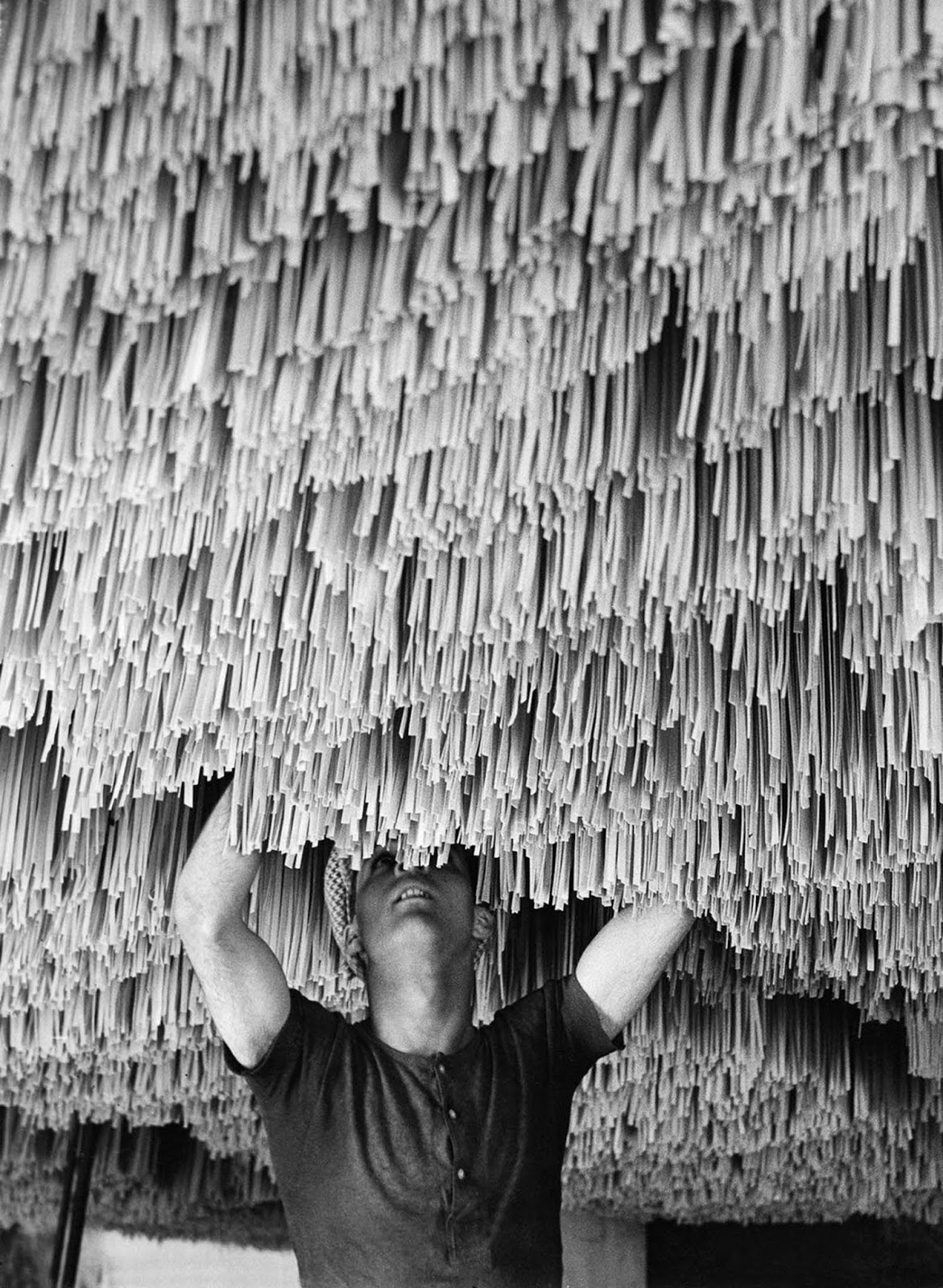
At the heart of Italy’s pasta lies durum wheat, a hardy grain that thrives in Italy’s warm, dry conditions. This wheat became the foundation for pasta production. The other game-changing ingredient in the rise of Italian pasta, however, didn’t arrive until much later: tomatoes. Though tomatoes were introduced to Europe after the voyages of discovery in the 16th century, they weren’t widely embraced until the mid-19th century. Initially, tomatoes were thought to be poisonous, but by 1839, the first pasta recipe with tomatoes was documented.
Once tomatoes gained popularity, they transformed pasta dishes, particularly in southern Italy, where they became the backbone of many classic sauces. The combination of durum wheat pasta with fresh tomato sauce has since become one of Italy’s most iconic culinary pairings, beloved around the world.
Industrialization of Pasta Production
By the mid-18th century, pasta production underwent a transformation, moving from small-scale artisanal methods to more industrial processes. Early pasta-making was a labor-intensive task, requiring workers to mix water and flour into a paste, then knead it for hours by hand. A significant change came with the invention of the torchio, a machine that allowed for the extrusion of dough into the familiar pasta shapes we recognize today.
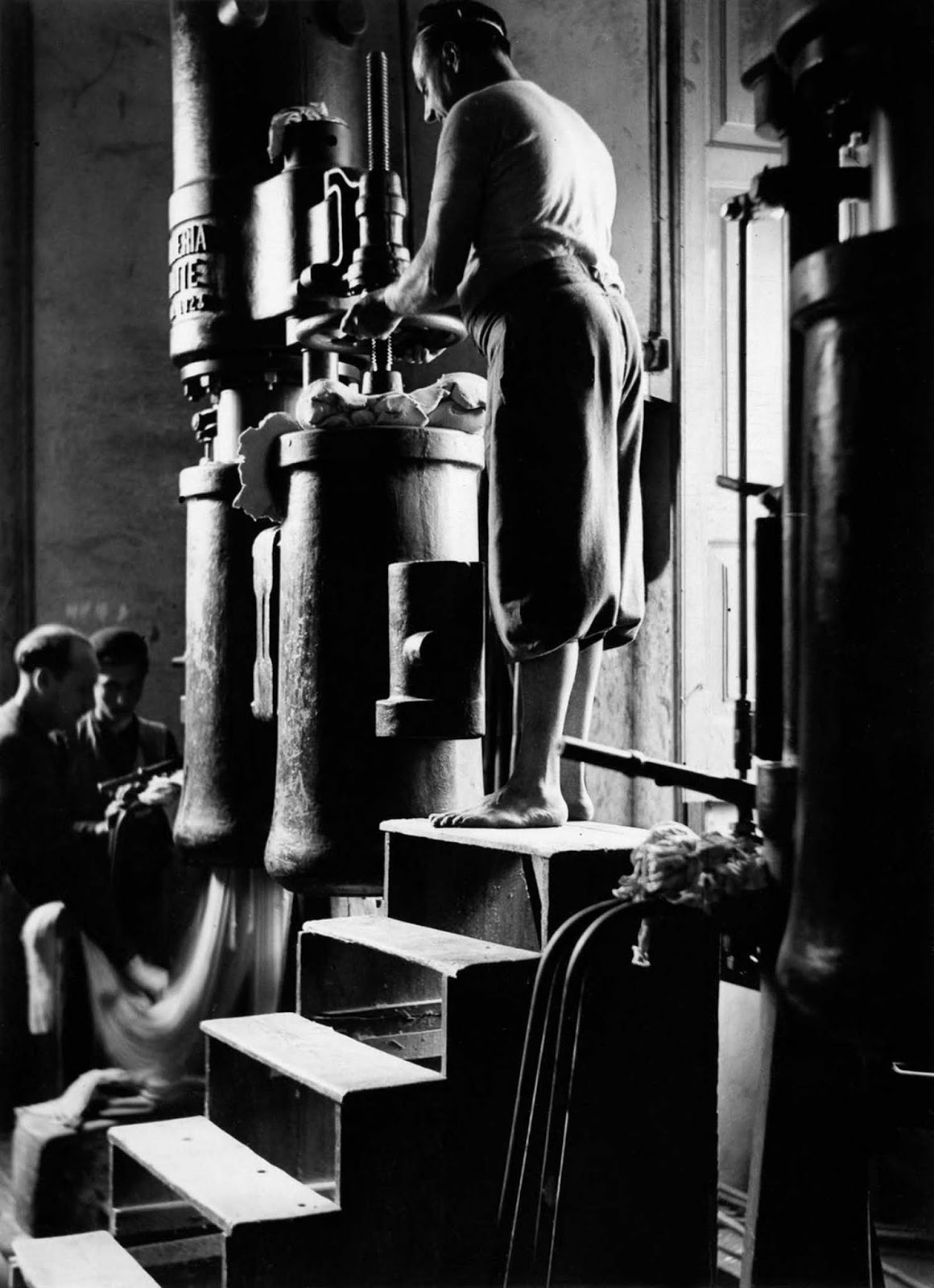
While machines helped speed up production, pasta drying remained a challenge. Even as factories became more mechanized, there was no quick solution for drying pasta; the process relied on the same natural methods used by the ancients—air drying. This necessitated the creation of a new role: the aizacanne, or pasta drier. These workers were responsible for ensuring that the strands of pasta were hung properly to dry in well-ventilated spaces. The work was delicate, requiring constant monitoring to prevent animals or humans from disturbing the drying process.
The Rise of New Professions: Pasta Driers and Machinery
As the demand for pasta grew in the late 19th and early 20th centuries, so did the industrialization of its production. The introduction of extruders and the torchio made the process of shaping and forming pasta more efficient. However, pasta driers continued to play a crucial role in ensuring the quality of the product.
While the invention of machines made the labor of pasta production easier, it also led to the development of new professions. The aizacanne became essential in large factories, where they would walk the streets, adjusting the strands of pasta on reed bars to ensure the drying process went smoothly. Despite technological advancements, the process remained a human endeavor until the late 20th century.
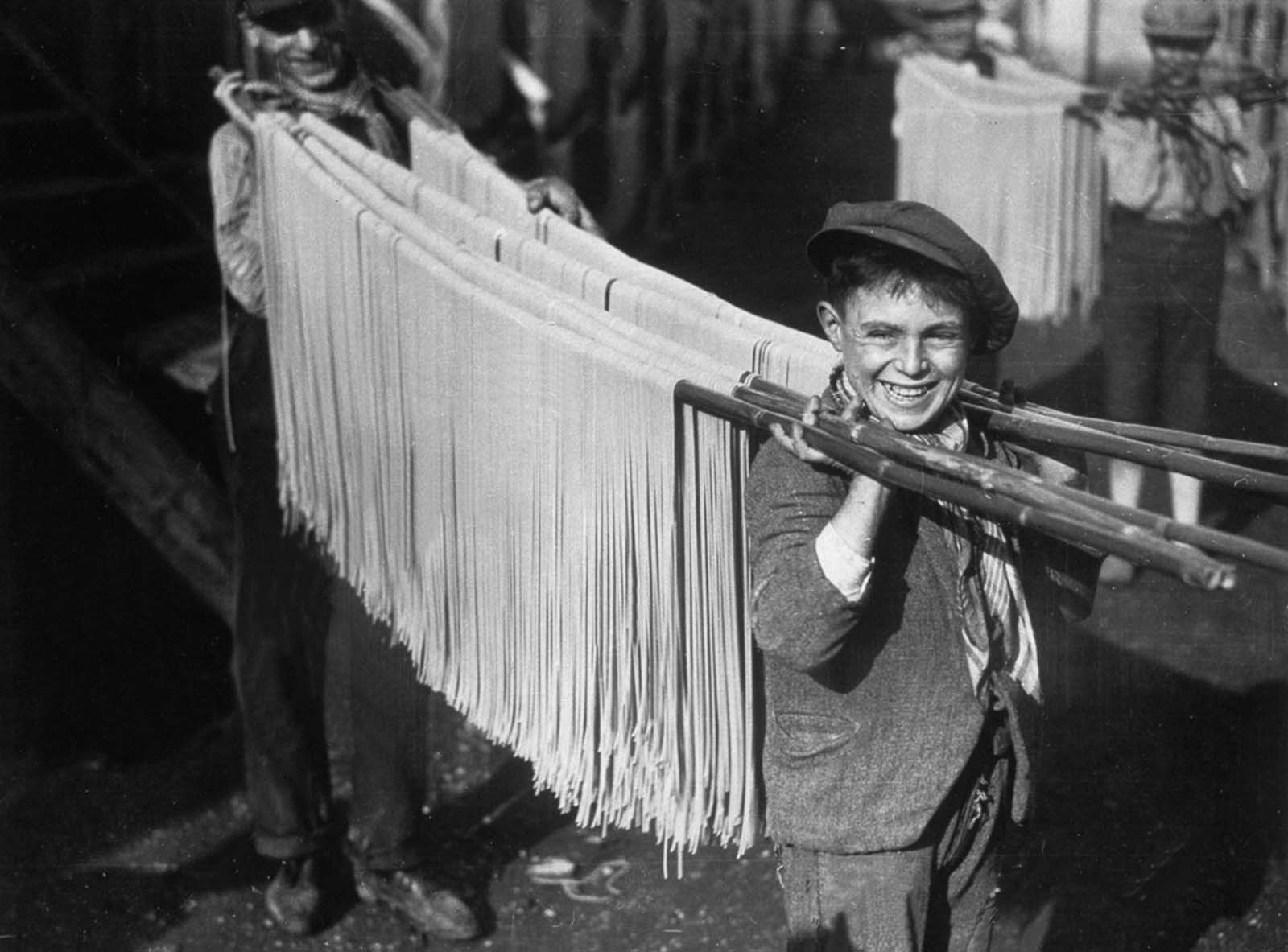
Challenges and Innovations: Labor and Machinery in Early Factories
In the early years of industrial pasta production, the process was still quite primitive. The machines could only do so much, and human labor was crucial in shaping the pasta and ensuring it was dried correctly. Workers often spent long hours kneading dough, and the early machines still required considerable human effort to operate. The introduction of new machines in the 20th century began to revolutionize the industry, but the essence of handmade pasta—labor-intensive and carefully crafted—remained in the process.
As industrialization took hold, pasta began to be produced in larger quantities and at more affordable prices, making it accessible to an even wider audience. However, pasta was still seen as a luxury product in many parts of the world, and it wasn’t until the mid-20th century that it became a common meal for families everywhere.
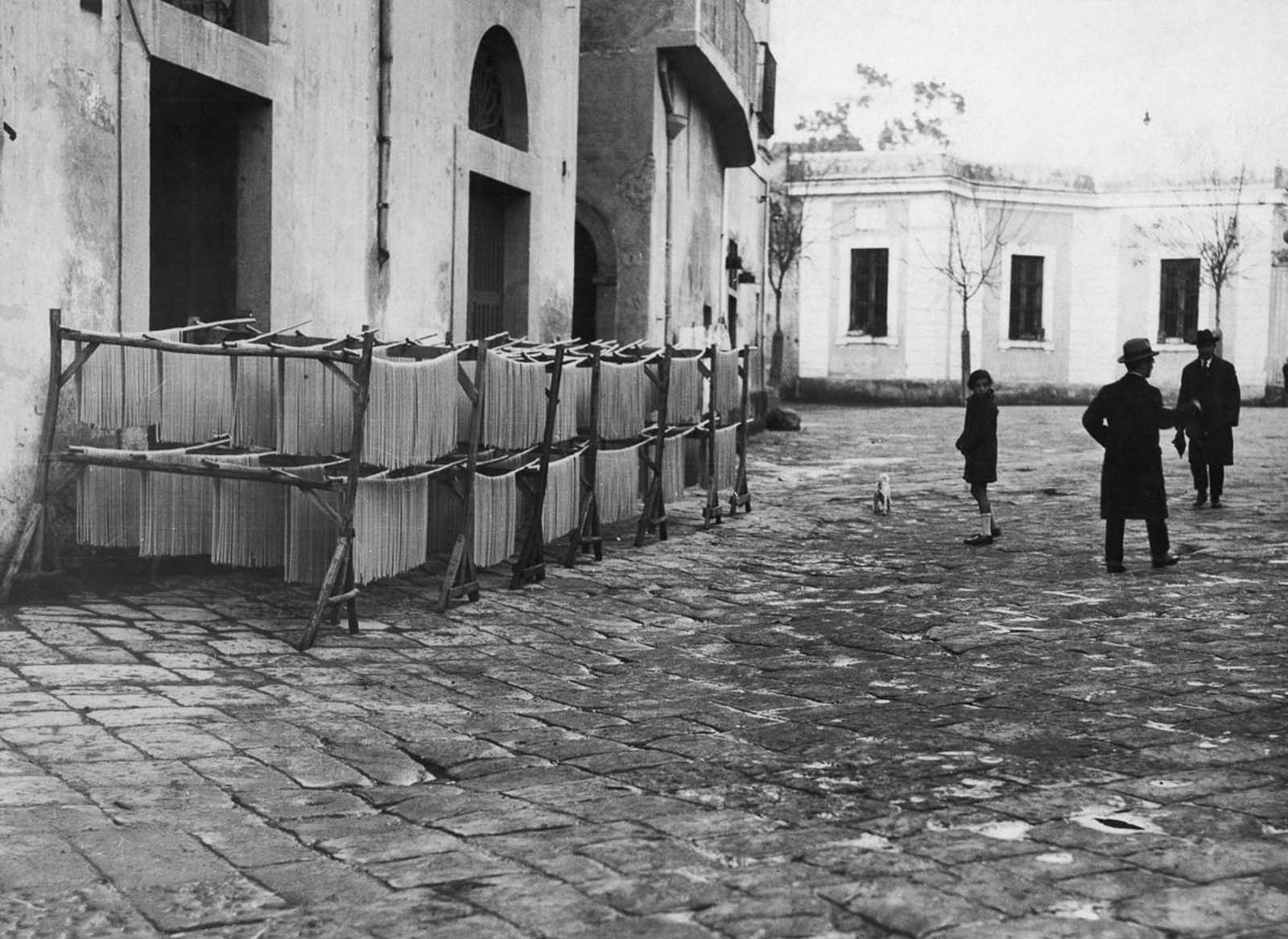
Pasta and Popular Culture: Myths, Misconceptions, and Global Influence
Pasta’s growing popularity in the mid-20th century reached new heights when it entered popular culture. In 1957, a famous April Fools’ Day prank aired on the BBC, showing Italians picking spaghetti from “spaghetti trees.” This humorous misconception captured the public’s imagination, but it also highlighted the fascination with pasta and its widespread appeal.
As pasta became more accessible and its production more efficient, it spread around the globe, establishing itself as a universal food enjoyed by people from all walks of life. It became synonymous with Italian cuisine, yet pasta’s influence could be felt in countless countries. Today, pasta is not just an Italian food—it’s a worldwide symbol of comfort and creativity.
The Golden Era of Pasta (1930s-1950s)
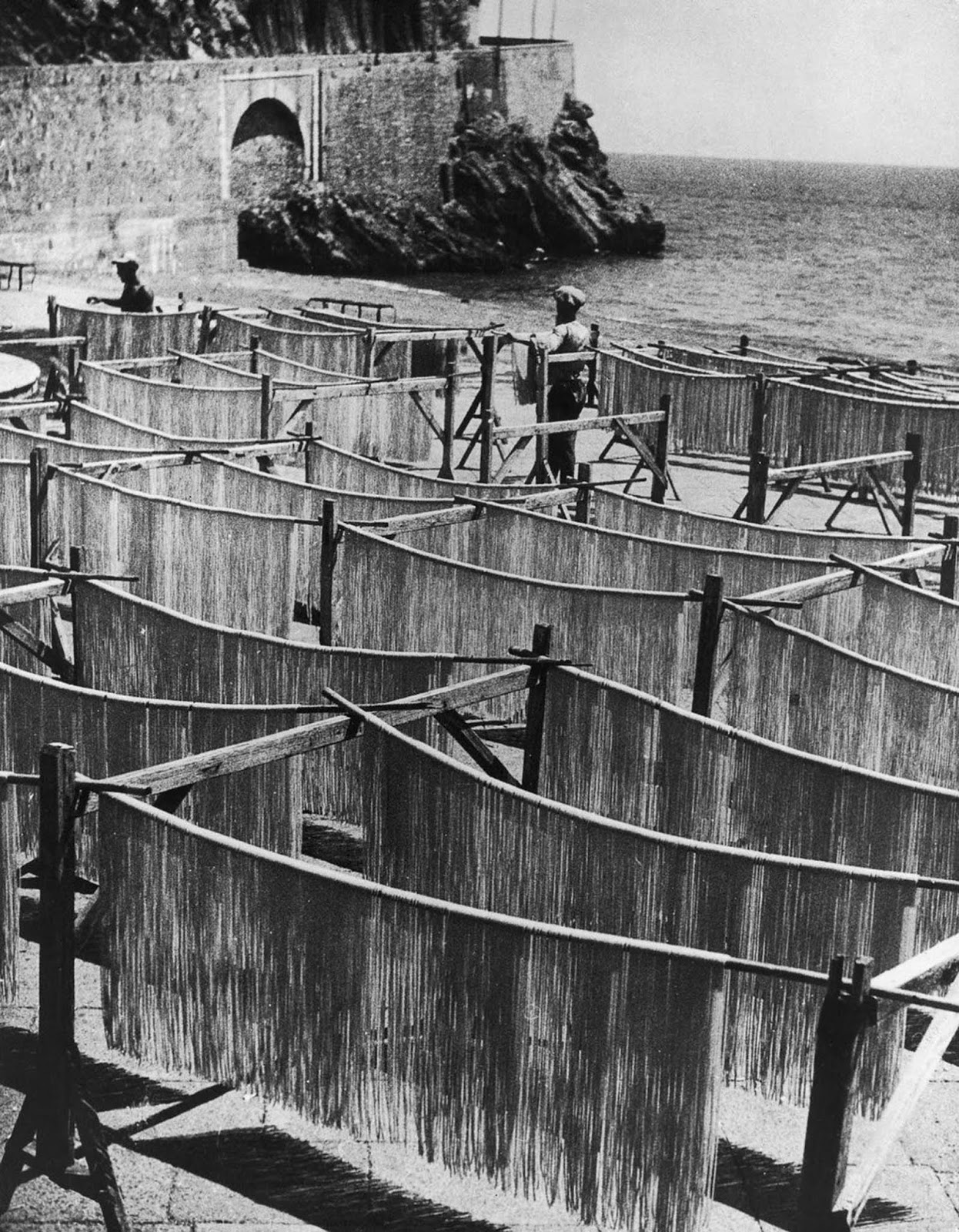
The 1930s through the 1950s marked the golden age of pasta production in Italy. The country’s factories became highly efficient, producing pasta in a variety of shapes and sizes. Meanwhile, Italian cuisine was gaining international recognition, with pasta at the center of this culinary revolution. Iconic pasta shapes such as spaghetti, penne, and fusilli were born during this period, and the rise of Italian restaurants outside of Italy only added to the dish’s global reputation.
Artisan Pasta: Tagliatelle and Other Specialty Pastas
While mass production dominated the industry, there was still a place for artisanal pasta. Tagliatelle, ravioli, and other specialty pastas were carefully handcrafted by skilled artisans, often in small towns and family-run businesses. These pastas, known for their distinct shapes and rich flavors, became a symbol of Italy’s dedication to culinary craftsmanship.
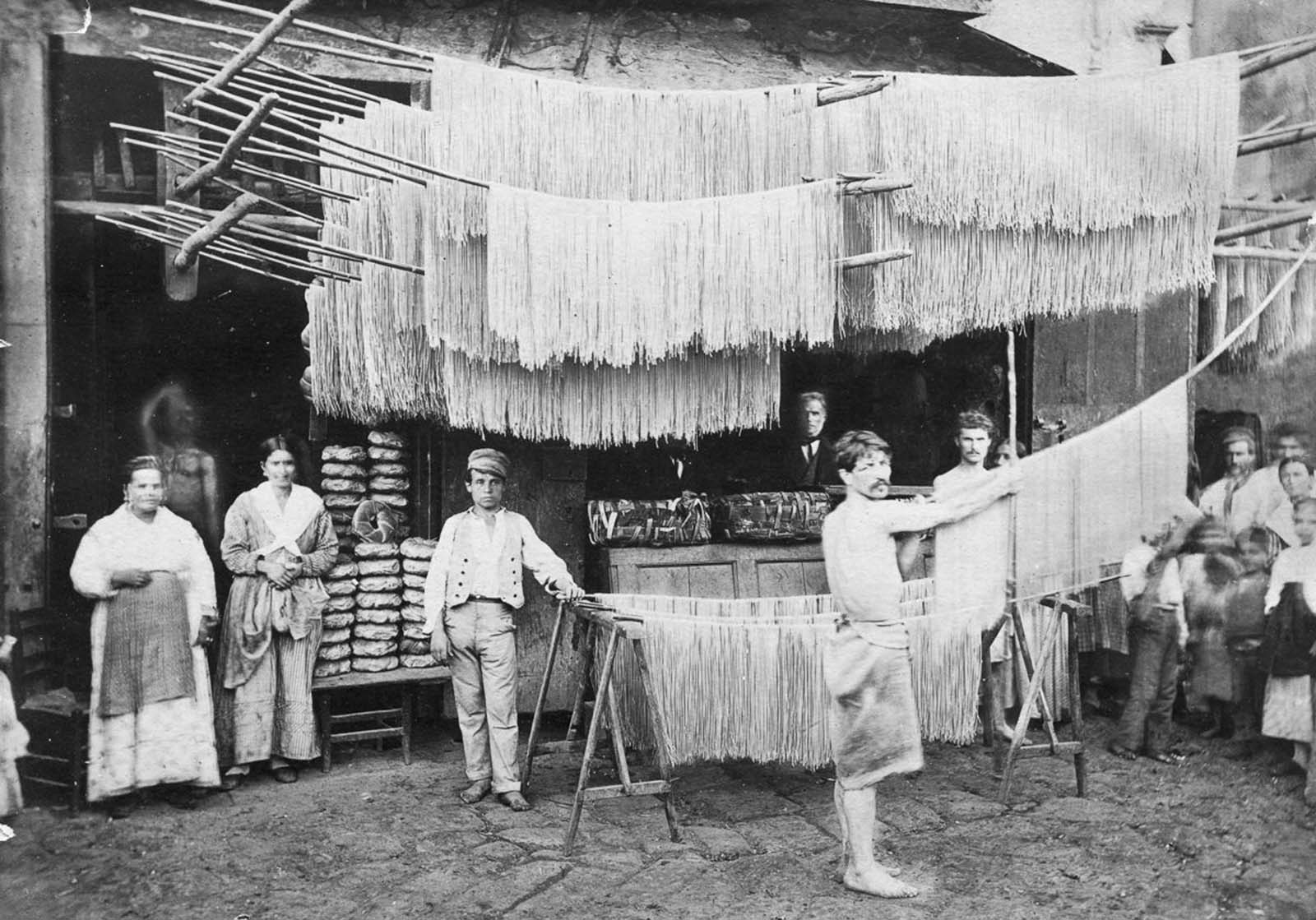
From Factory to Table: The Pasta Production Process
The process of making pasta, from mixing the dough to drying the strands, is an intricate one. Today, pasta is still produced in factories using advanced machinery, but the essence of its traditional preparation remains. In this section, we take a closer look at how pasta is made: from the initial mixing of flour and water to the final drying and packaging of the product, ensuring the quality of every strand.
Conclusion: The Enduring Allure of Pasta
Pasta’s journey from ancient times to the modern day is a testament to its enduring popularity and versatility. Whether it’s a simple plate of spaghetti with tomato sauce or a complex lasagna layered with rich flavors, pasta continues to bring people together. From its early roots in Italy to its place as a global staple, pasta’s history is deeply woven into the fabric of Italian culture. Even as production methods evolve, pasta’s timeless appeal remains unchanged, ensuring that it will continue to be a beloved part of kitchens worldwide for generations to come.
Gallery: Vintage Photographs of Italian Pasta Production
This gallery features a collection of rare images from Italy’s pasta production history, showcasing the traditional techniques, labor-intensive processes, and the craftsmanship that went into making the beloved dish. From the 1930s to the 1950s, these photographs capture the heart of Italy’s pasta industry and its transformation into the global phenomenon it is today.
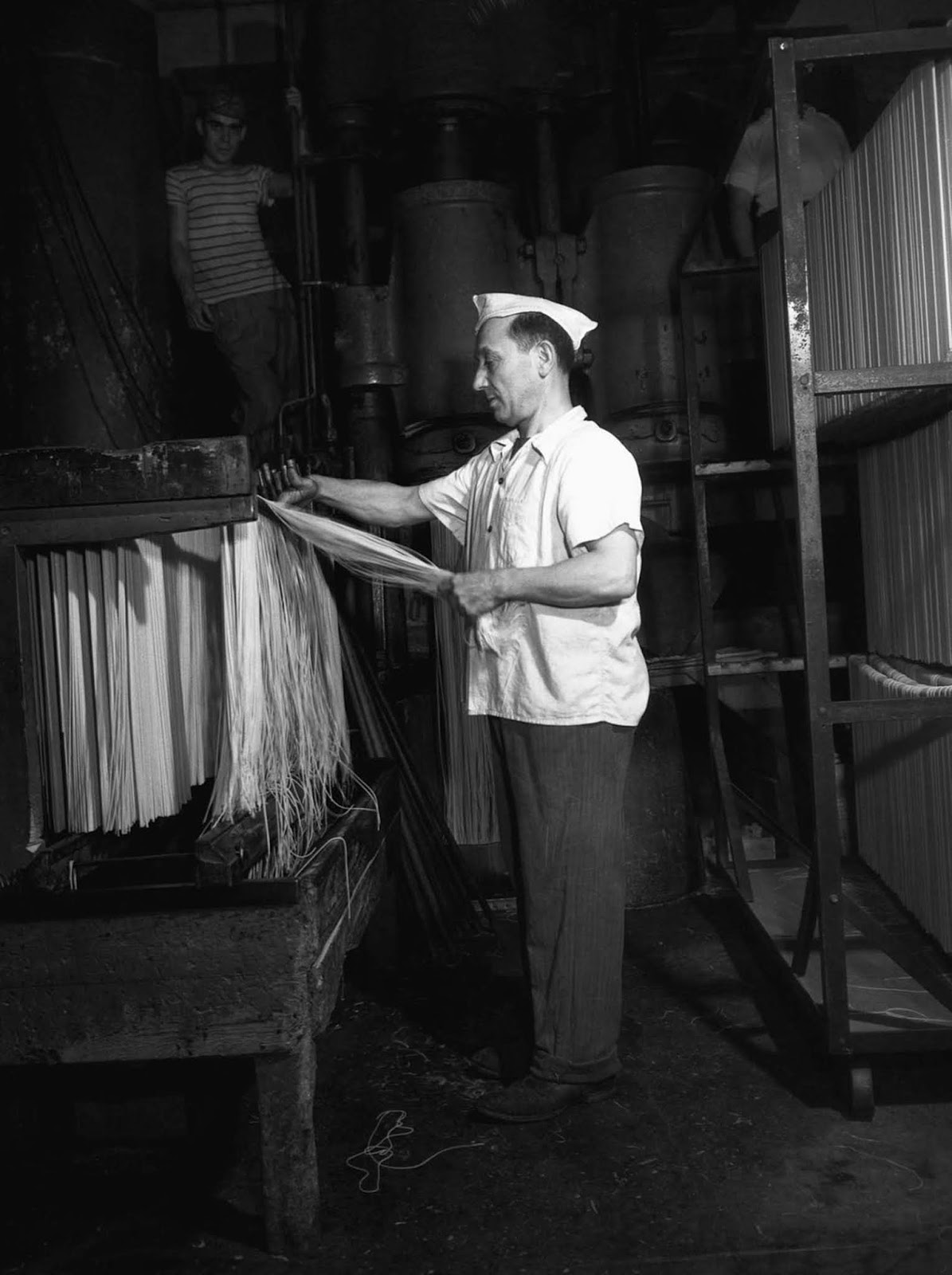
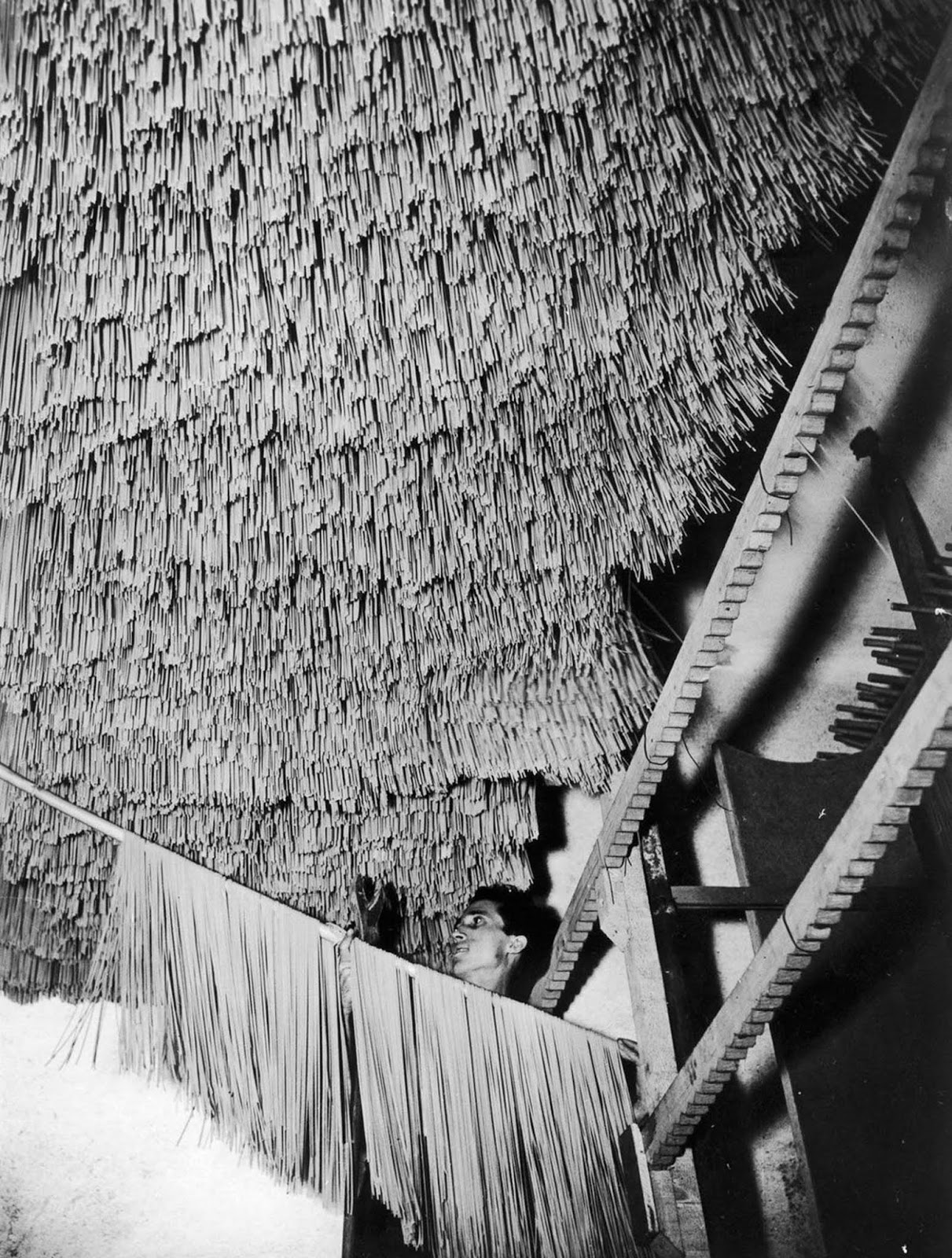
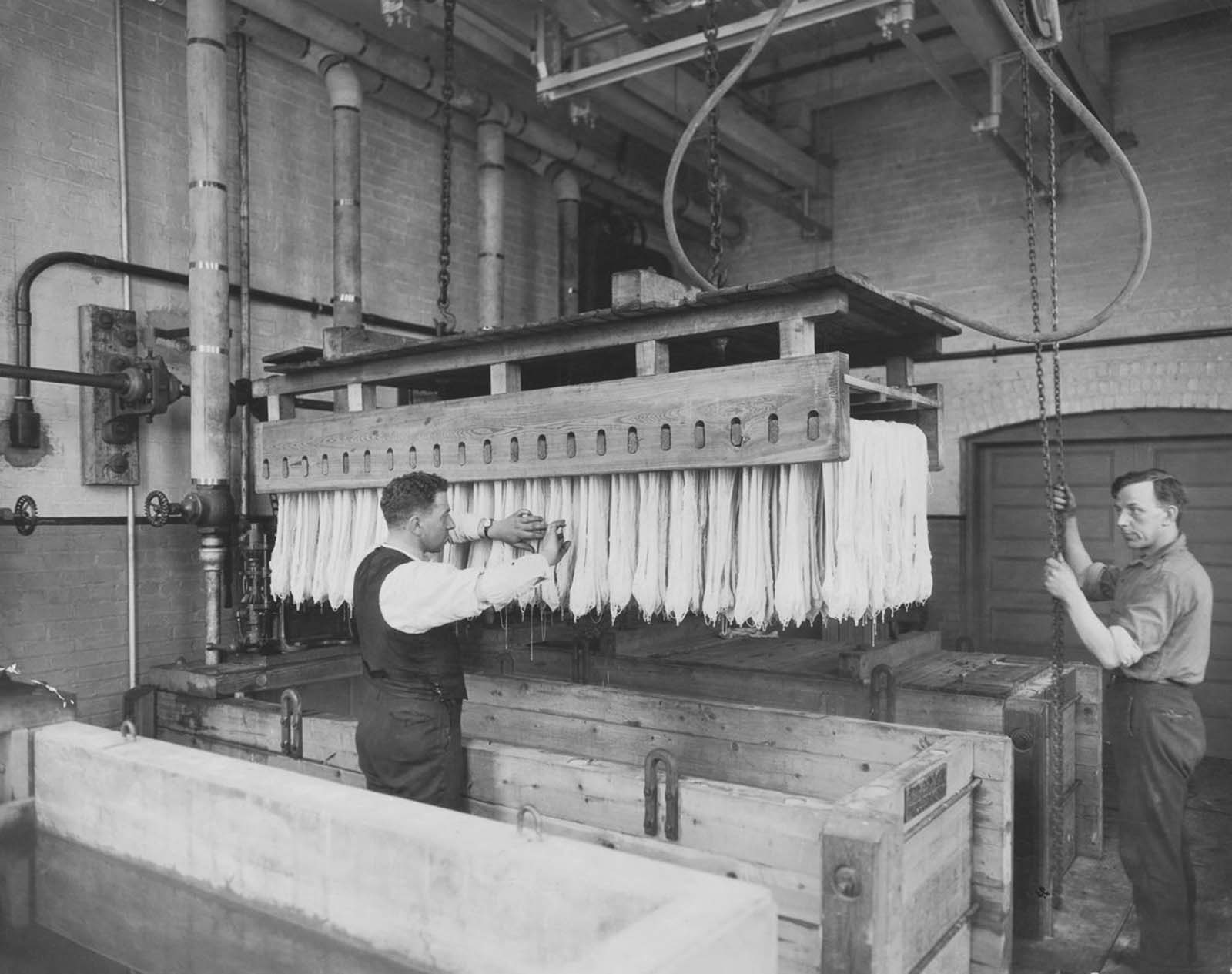
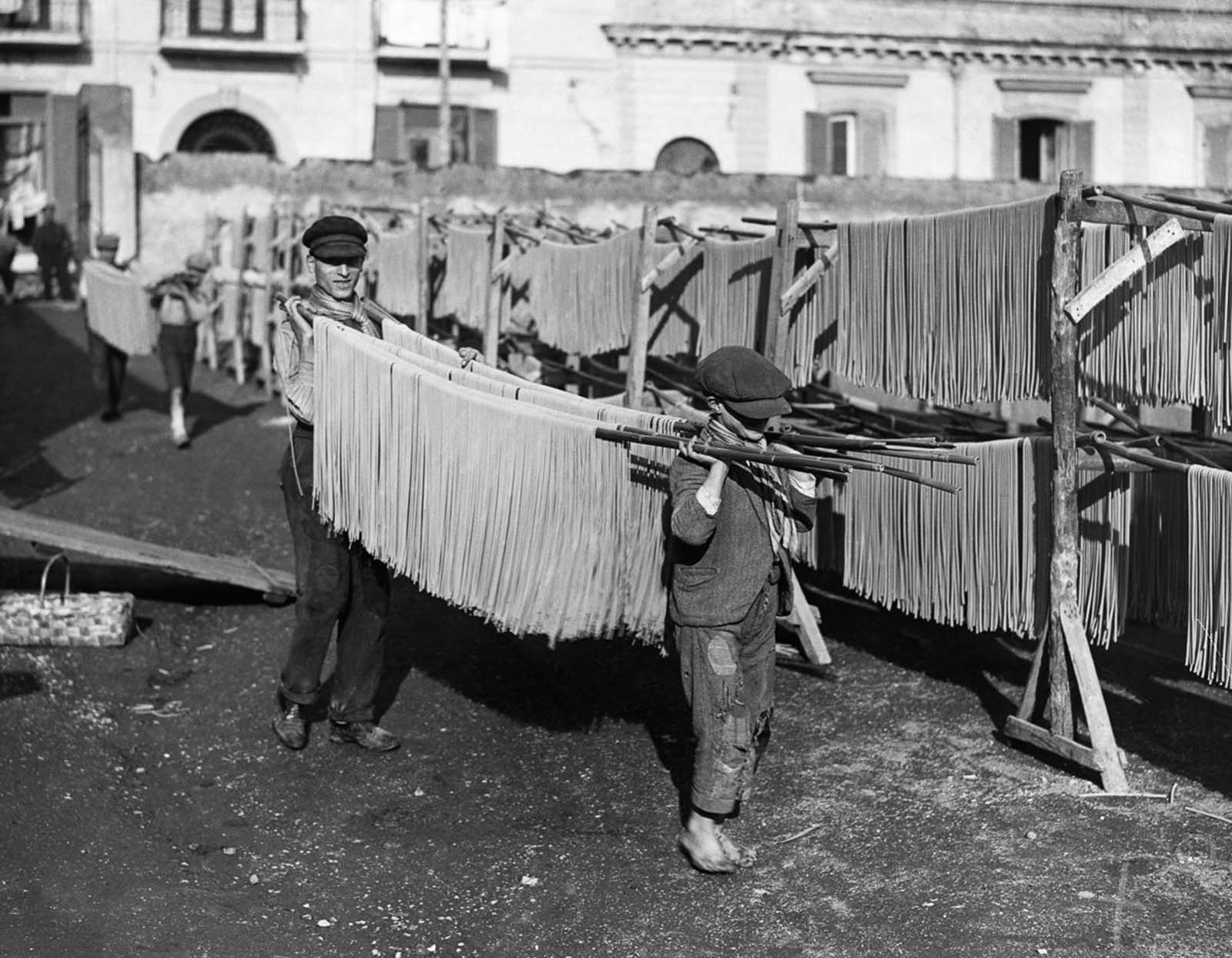
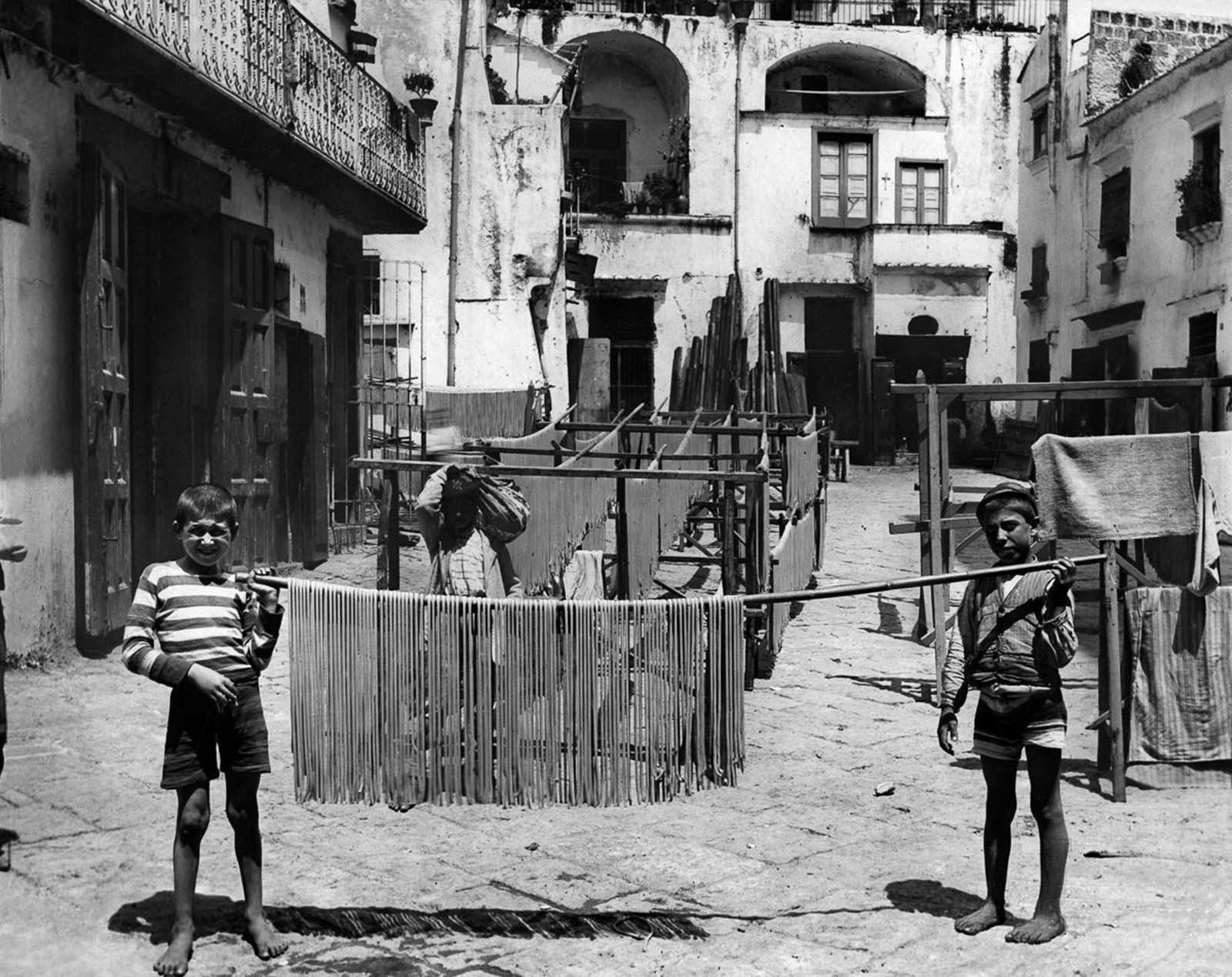
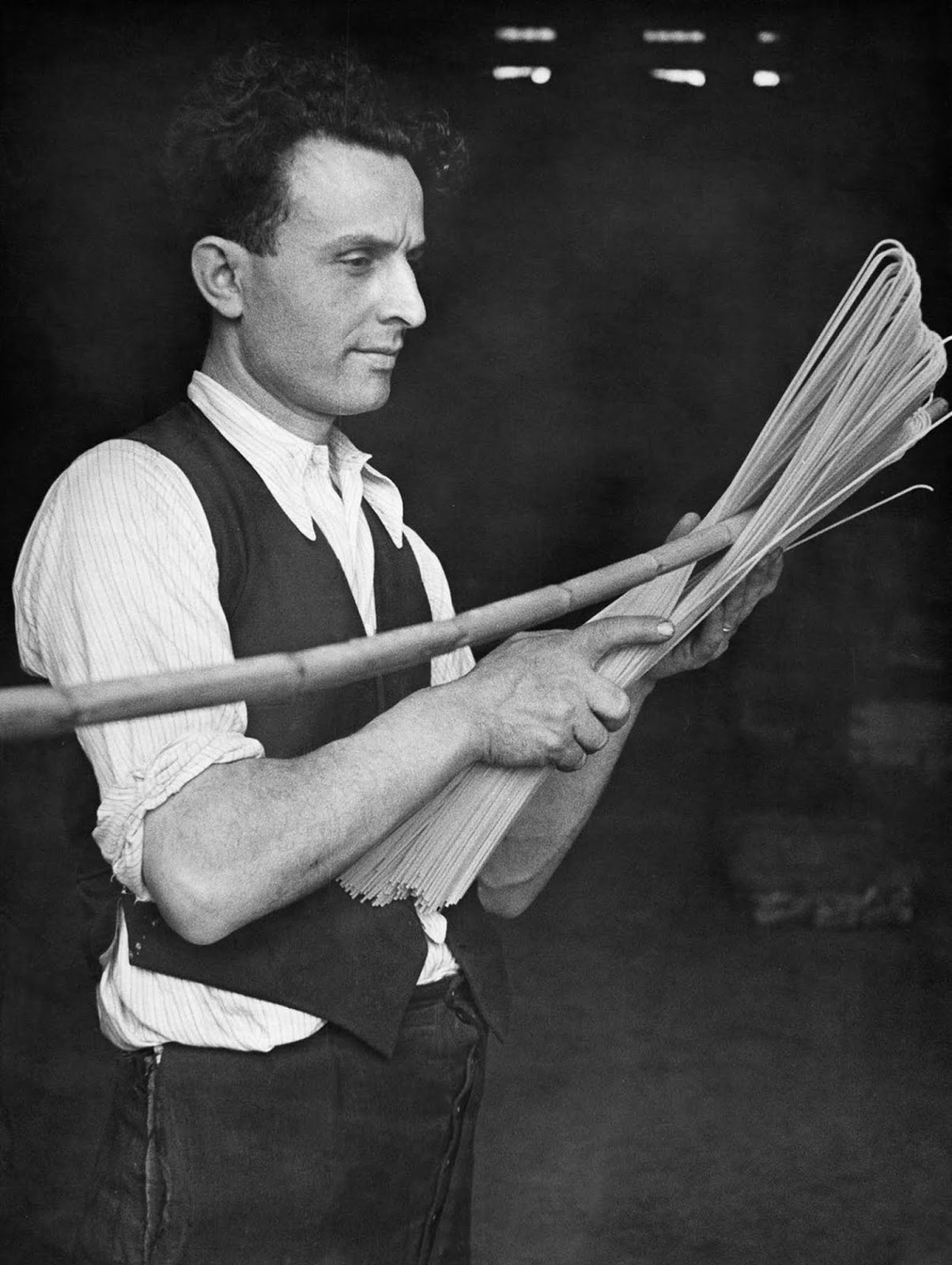
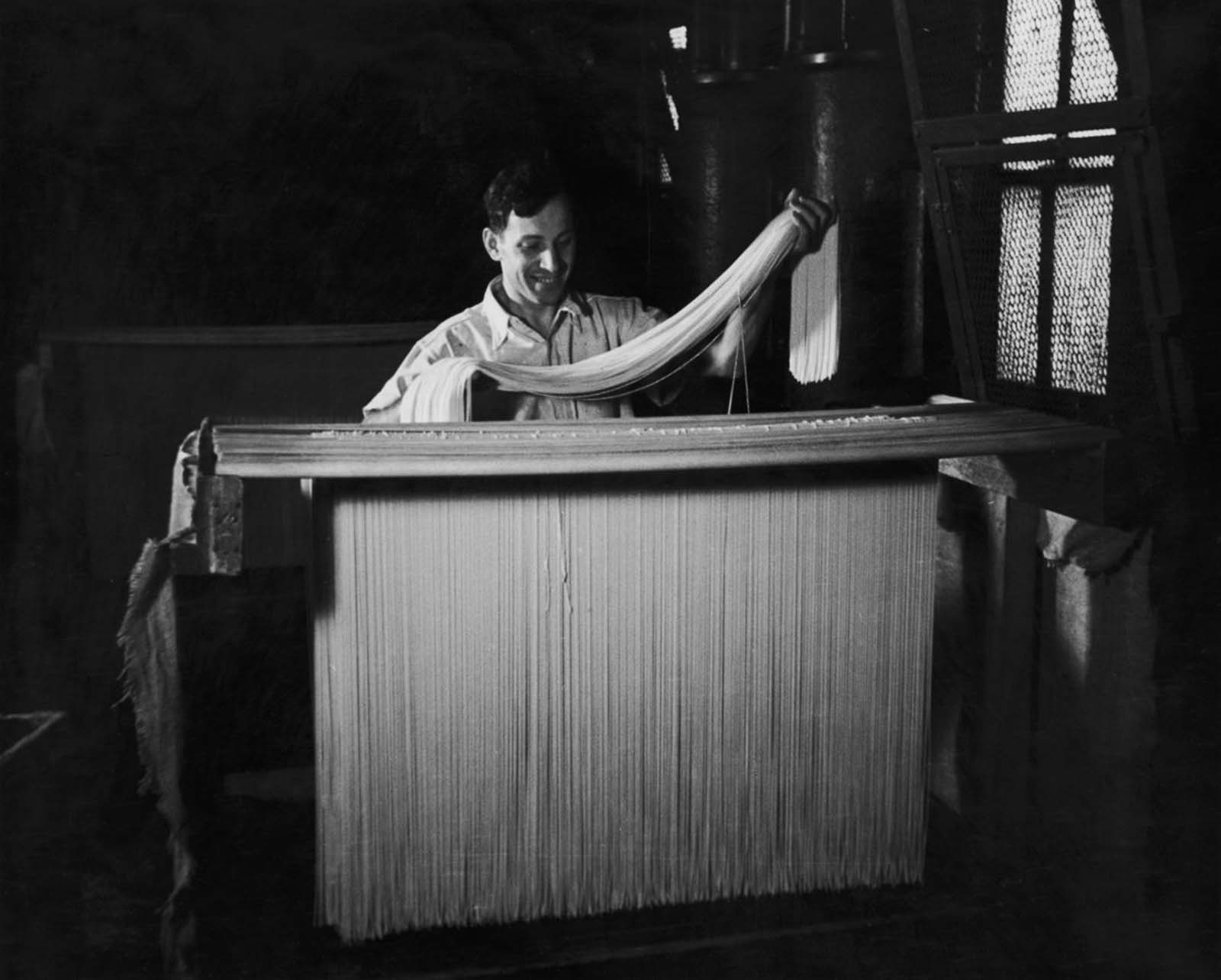
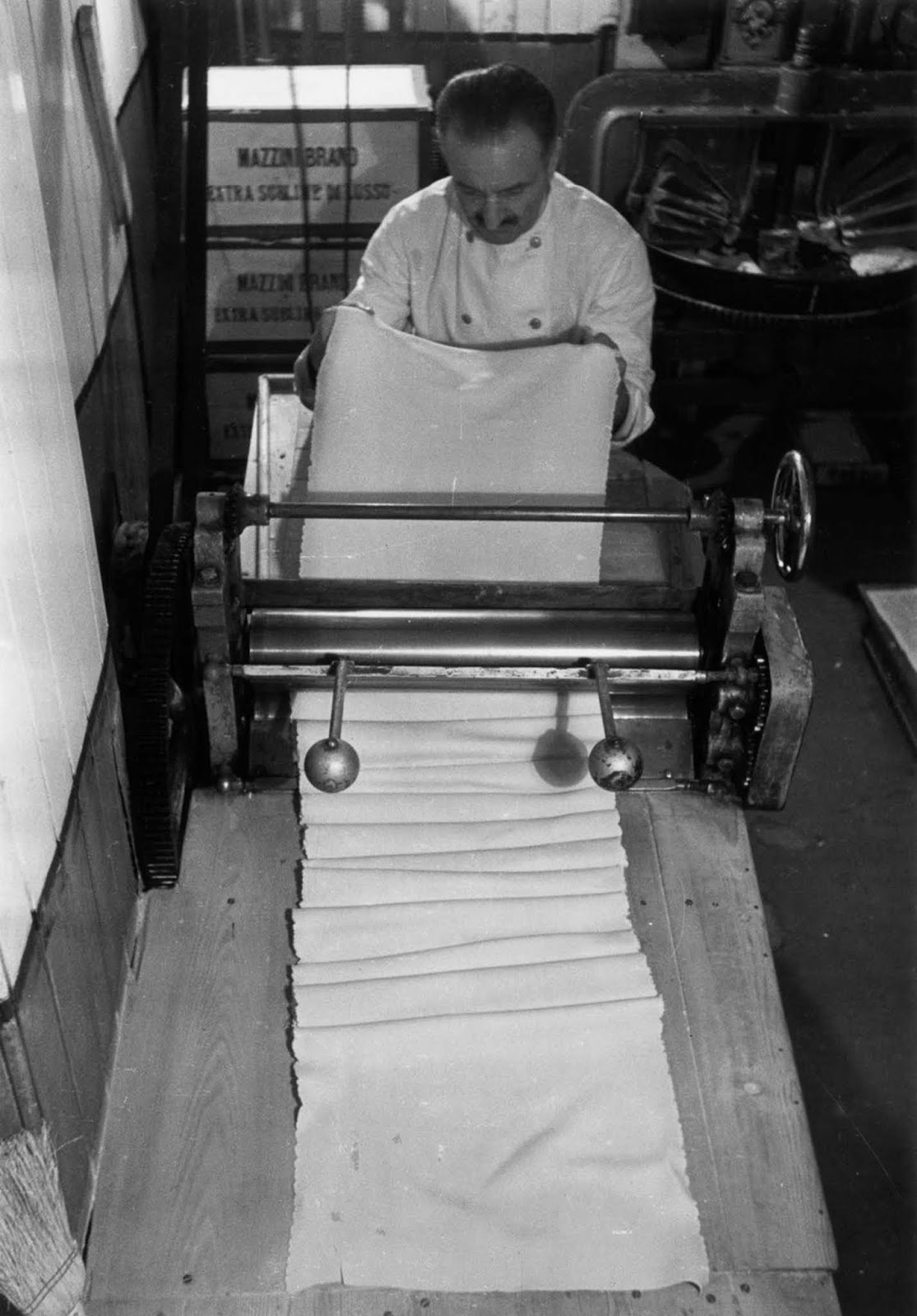
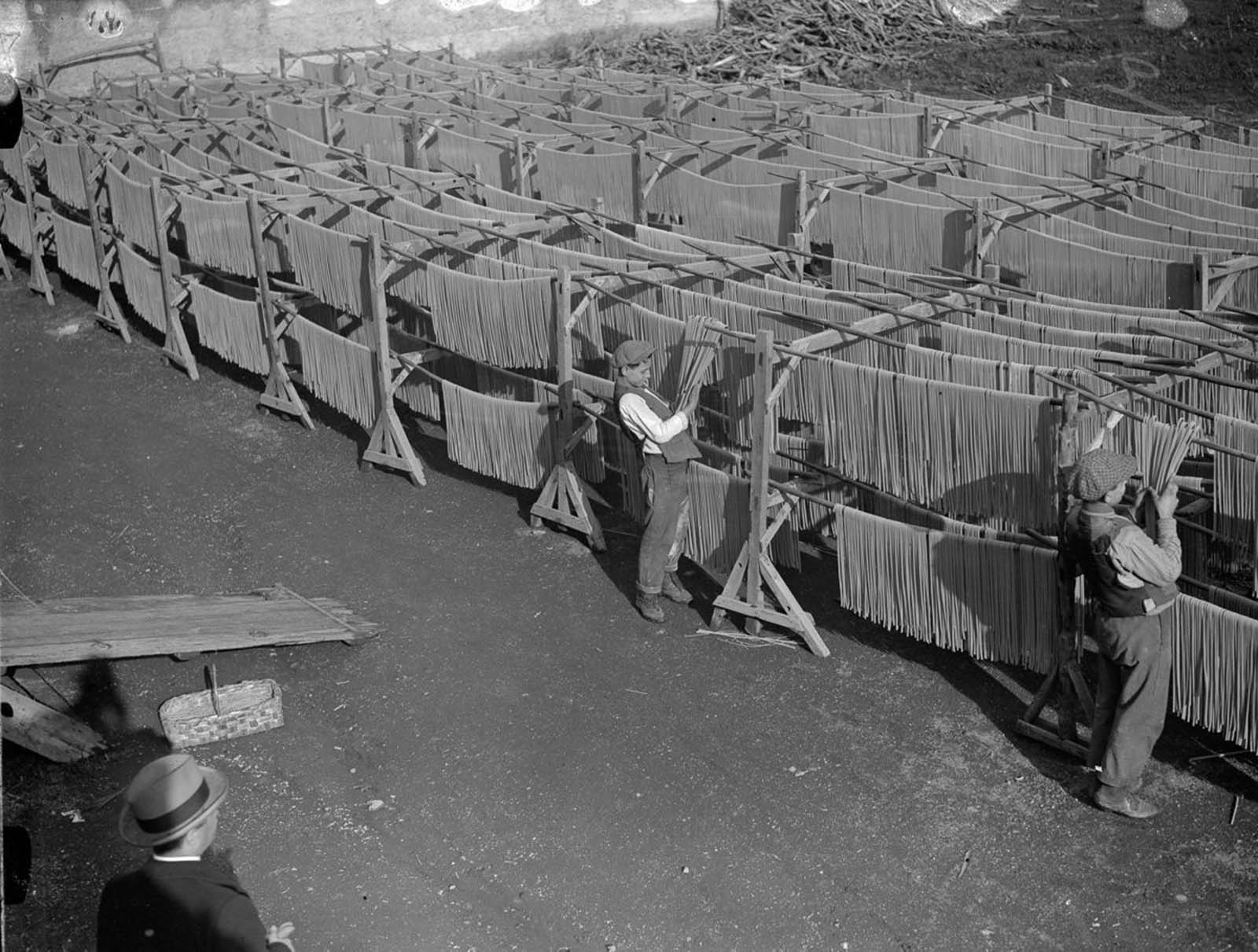
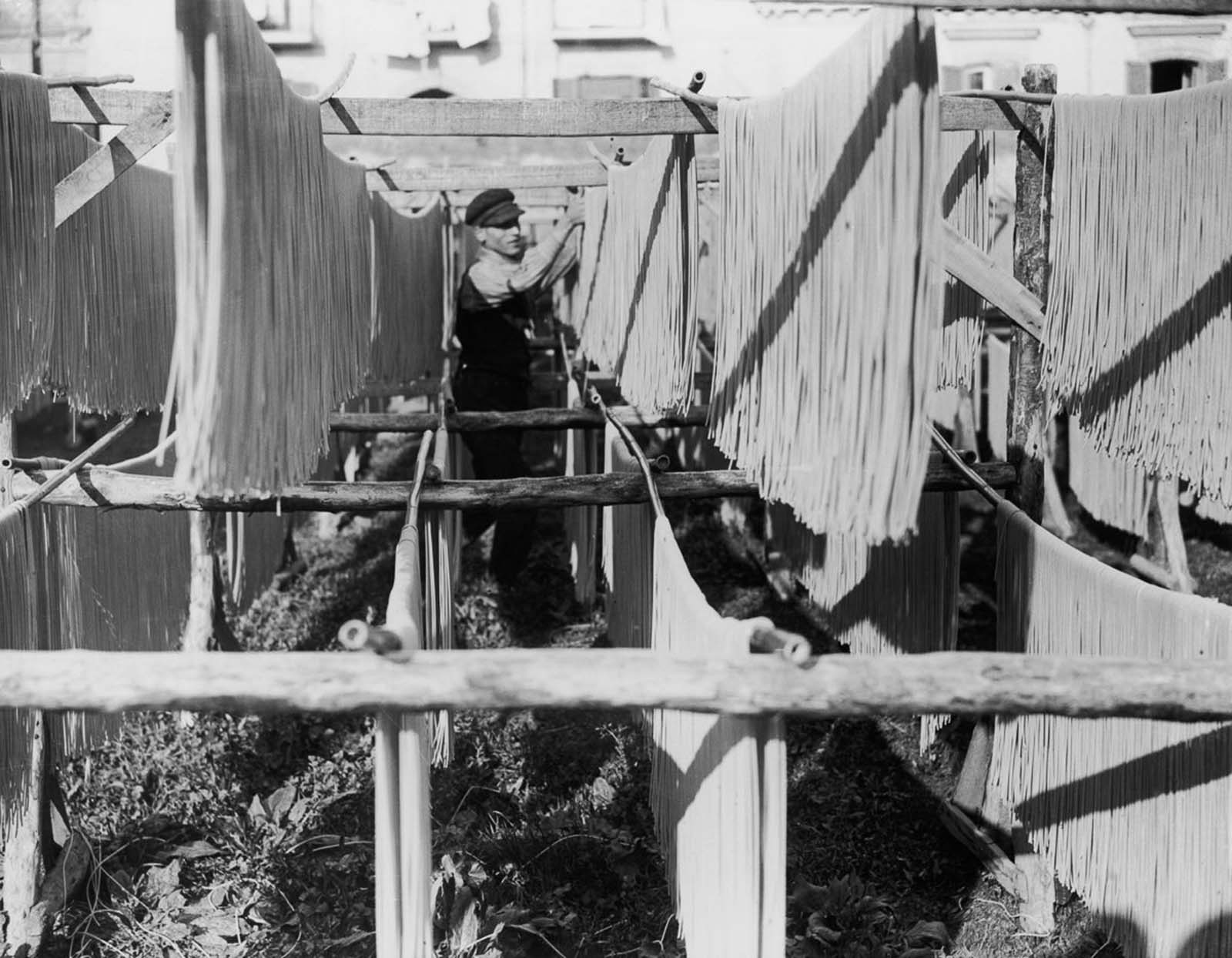
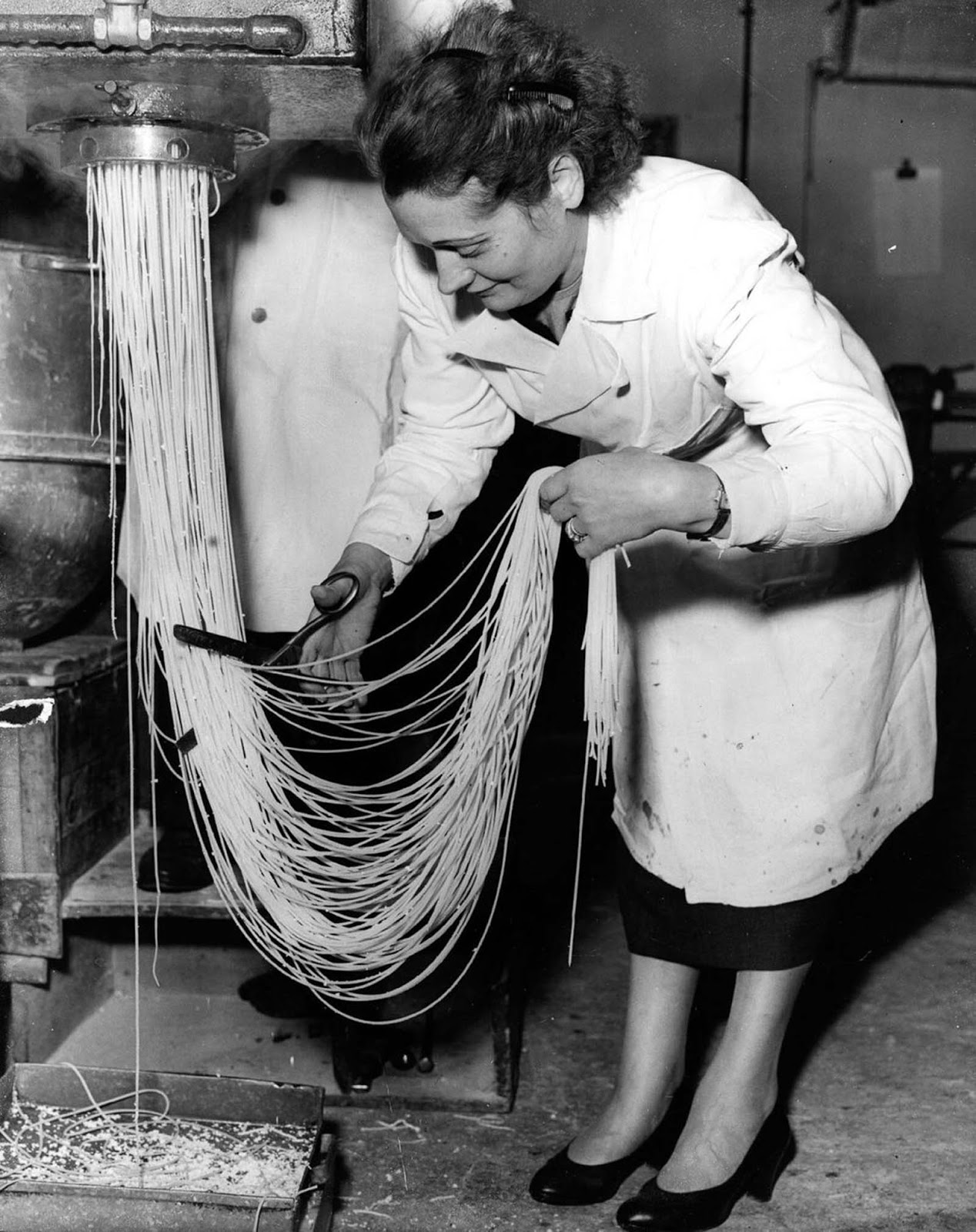
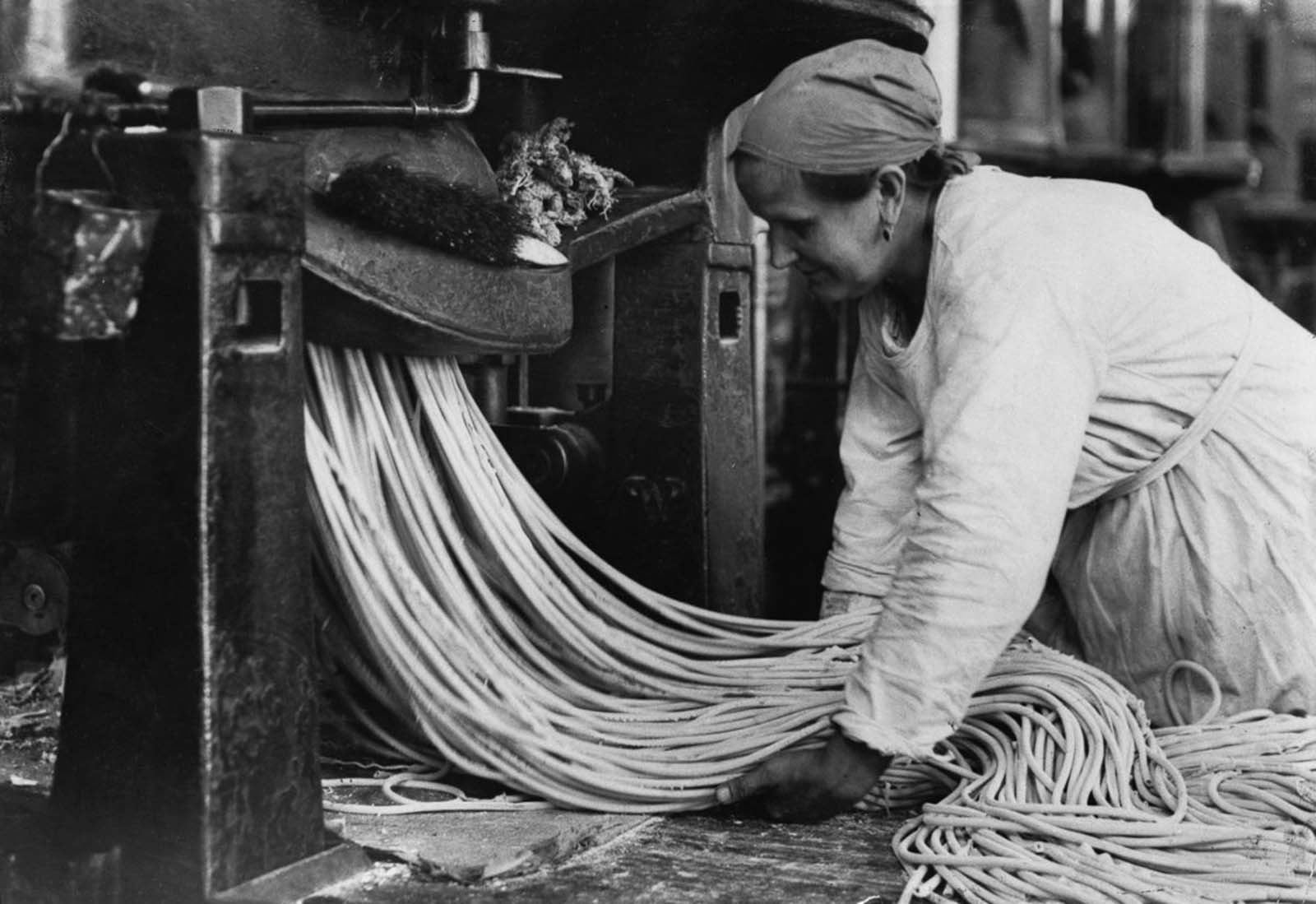
Video
Watch How Grannies Make Fresh Pasta In The Streets Of Bari, Italy on Regional Eats to see these amazing traditions in action. Don’t miss it!
